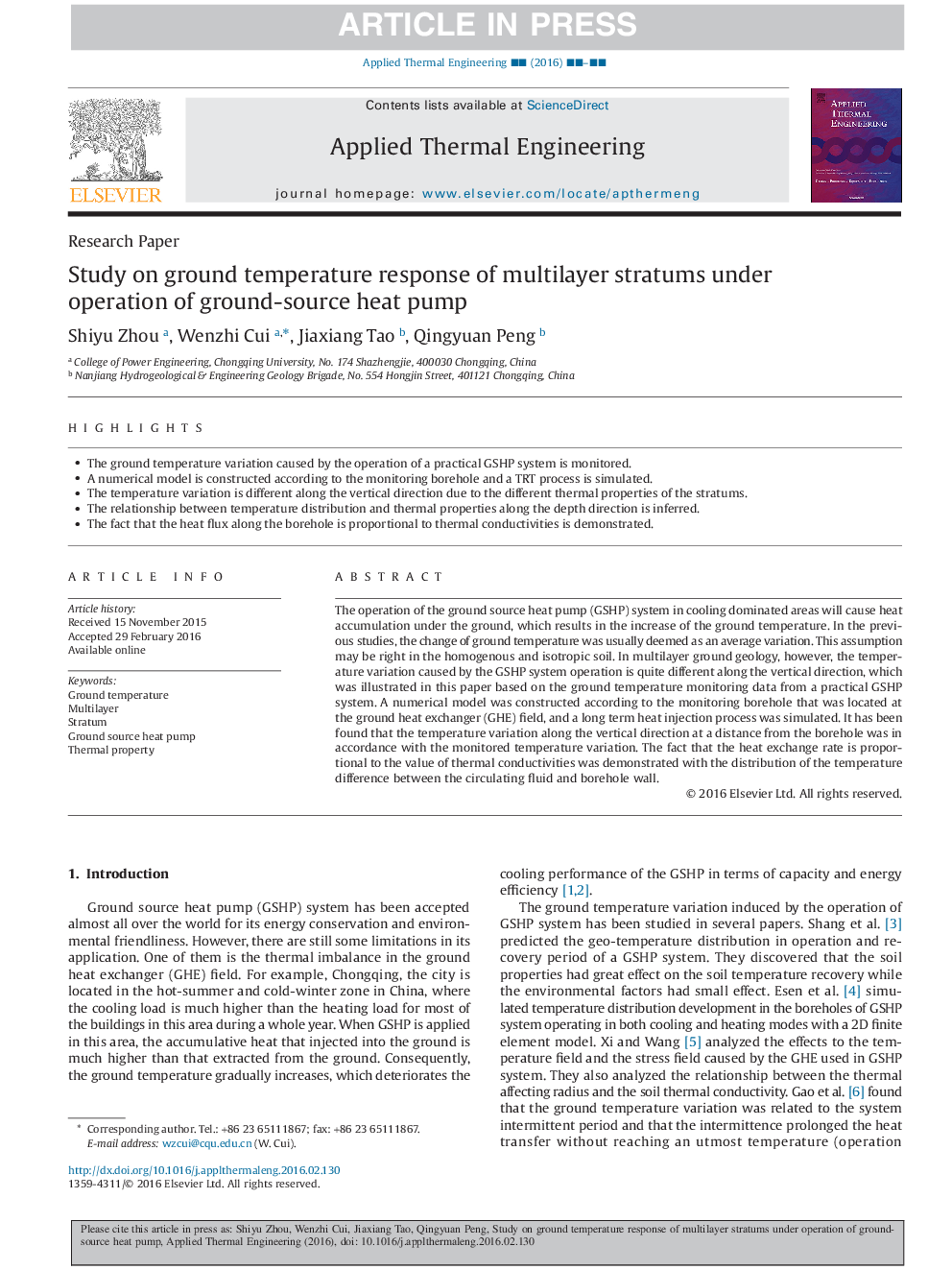| Article ID | Journal | Published Year | Pages | File Type |
|---|---|---|---|---|
| 7047992 | Applied Thermal Engineering | 2016 | 10 Pages |
Abstract
The operation of the ground source heat pump (GSHP) system in cooling dominated areas will cause heat accumulation under the ground, which results in the increase of the ground temperature. In the previous studies, the change of ground temperature was usually deemed as an average variation. This assumption may be right in the homogenous and isotropic soil. In multilayer ground geology, however, the temperature variation caused by the GSHP system operation is quite different along the vertical direction, which was illustrated in this paper based on the ground temperature monitoring data from a practical GSHP system. A numerical model was constructed according to the monitoring borehole that was located at the ground heat exchanger (GHE) field, and a long term heat injection process was simulated. It has been found that the temperature variation along the vertical direction at a distance from the borehole was in accordance with the monitored temperature variation. The fact that the heat exchange rate is proportional to the value of thermal conductivities was demonstrated with the distribution of the temperature difference between the circulating fluid and borehole wall.
Related Topics
Physical Sciences and Engineering
Chemical Engineering
Fluid Flow and Transfer Processes
Authors
Shiyu Zhou, Wenzhi Cui, Jiaxiang Tao, Qingyuan Peng,
